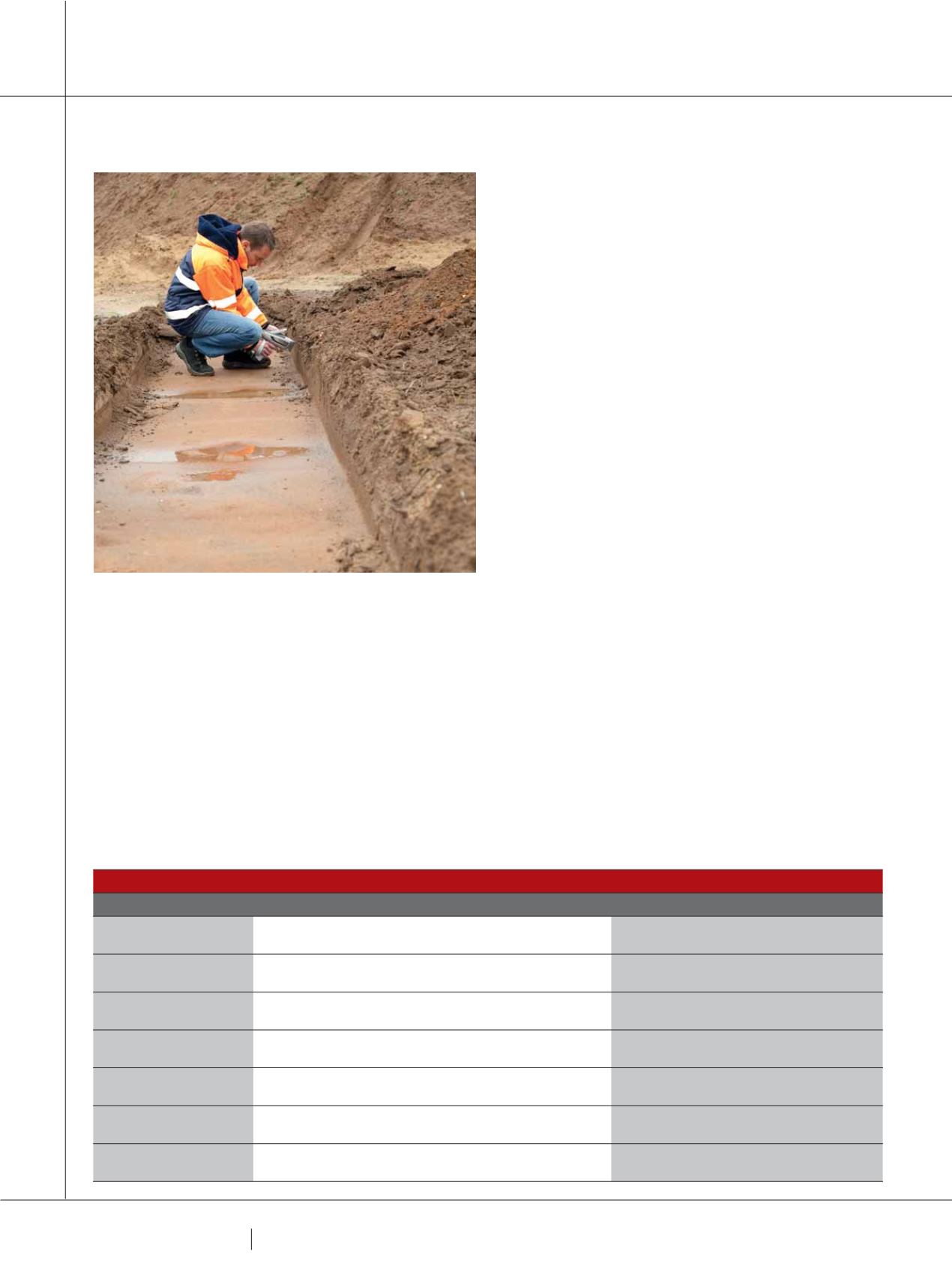

4 8
PLUMBING CONNECTION
SUMMER 2016
“Approximately 10 years ago, we were doing some work for
the Office of Housing (Department of Foreign Services) who
own and operate our public housing,” chair of department of
civil and construction engineering at Swinburne University
Emad Gad says.
“They maintain about 50,000 properties. They noticed
that during that time they had high maintenance
requirements for some of their houses that were
experiencing settlement. That was during the drought. From
mid 2000-2010 a lot of existing houses were beginning to
show signs of distress in the form of cracks. It wasn’t across
all of Victoria, but in a pocket where we have reactive soils.
It was discovered that the edges of slabs and footings
were dropping. This could have been the result of minimal
rainfall or from trees absorbing moisture from the ground.
The other thing to remember is the fact that due to a
growing population, we are building in areas we wouldn’t
have 30 years ago, often in highly reactive areas.
“We started the work in 2012. Around that time the drought
had broken. Soon after that time slabs were beginning to
heave - grounds that were dry had been filled with moisture
and started to swell. This brought with it the opposite effect
and now slabs were observed to be curling up.”
As a general rule, when the ground moves so too does
the slab. When the slab moves, the walls and pipes do as
well and that’s when cracks begin to appear. Plumbing
connections break, structural integrity diminishes and home
or building owners become understandably disgruntled.
Not only do cracked pipes ruin the effectiveness and
sanitation of drainage systems, but leaked fluids can cause
additional soil upheaval or subsidence leading to even
greater fractures – the result is self-generating, escalating
pipe damage.
“Our focus changed from looking at why shrinking
occurred, to the issue of heaving,” Emad continues. “Most
homes affected were those built toward the end of the
drought around 2006-07. We began to look at environmental
factors as well as soil classifications.”
And the latter is where we focus our attention, as that’s
where it all begins for you as a plumber or designer.
SITE CLASSIFICATIONS
Before commencing any below ground drainage work,
there are a number of things you need to do.
In order to select the right drainage design and fixtures,
SOIL CLASSIFICATIONS & REACTIVE PROPERTIES
SOIL CLASSIFICATION
SOIL FOUNDATION
CHARACTERISTIC SURFACE MOVEMENT (ys) mm
A
Most sand and rock sites with little or no ground movement
from moisture changes
ZERO
S
Slightly reactive clay sites, which may experience only slight
ground movement from moisture changes
0 - 20mm
M
Moderately reactive clay sites, which may experience moderate
ground movement from moisture changes
21 - 40mm
H1
Highly reactive clay sites, which may experience high ground
movement from moisture changes
41 - 60mm
H2
Highly reactive clay sites, which may experience very high
ground movement from moisture changes
61 - 75mm
E
Extremely reactive sites, which may experience extreme
ground movement from moisture changes
75 mm+
P
Applies to “problem” sites (e.g. filled soil or potential to
collapse).
AS TESTED
Geotechnical engineers are required to test soils and
provide soil classification reports.
REACTIVE SOIL
















